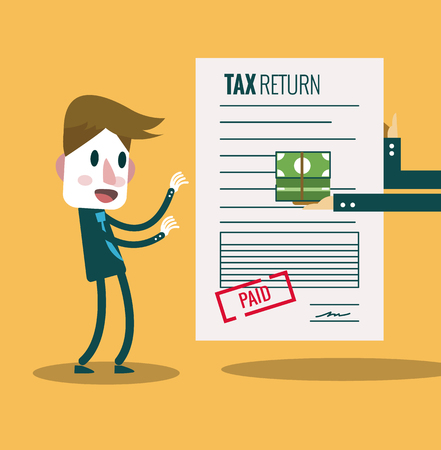Introduction to ETFs and Their Popularity
Exchange-Traded Funds, or ETFs, have taken the American investment landscape by storm over the past two decades. Once considered a niche product, ETFs are now a staple in countless portfolios, from individual retirement accounts to large institutional funds. But what exactly is an ETF? In essence, an ETF is a basket of securities—such as stocks, bonds, or commodities—that trades on an exchange like a stock. This structure offers investors the diversification benefits of mutual funds combined with the flexibility and real-time pricing of individual stocks. One of the key drivers behind the meteoric rise of ETFs among U.S. investors is their efficiency—not just in terms of cost and liquidity, but also when it comes to taxes. Compared to traditional mutual funds and other investment vehicles, ETFs provide unique tax advantages that can help investors keep more of their returns over time. Understanding what sets ETFs apart—and why theyve become such a popular choice—lays the foundation for exploring how savvy investors can leverage these products to minimize taxes and maximize overall returns.
2. Understanding Tax Efficiency of ETFs
One of the key reasons investors in the United States are increasingly choosing Exchange-Traded Funds (ETFs) over traditional mutual funds is the unique tax efficiency that ETFs provide. This tax advantage stems from the distinct creation and redemption process that sets ETFs apart from mutual funds, resulting in fewer taxable events for shareholders.
How ETFs Minimize Capital Gains Distributions
Traditional mutual funds typically buy and sell securities within their portfolios to meet investor redemptions or to rebalance. When a mutual fund sells securities that have appreciated in value, it triggers capital gains, which are then distributed to all shareholders—regardless of whether they personally sold any shares. This can lead to an unexpected tax bill at the end of the year.
In contrast, ETFs use an “in-kind” creation and redemption mechanism involving large institutional investors known as Authorized Participants (APs). When there are redemption requests, instead of selling securities for cash, ETFs transfer a basket of underlying securities to the APs. This process allows ETFs to avoid realizing capital gains internally, which means those gains are not passed on to individual investors as taxable distributions.
Comparing Tax Efficiency: ETFs vs. Mutual Funds
| Feature | ETFs | Mutual Funds |
|---|---|---|
| Redemption Process | In-kind transfers minimize taxable events | Sells securities, triggering capital gains |
| Capital Gains Distributions | Rare; typically only when portfolio rebalances | Frequent; can occur with high investor turnover |
| Tax Impact on Investors | Investors generally control when they realize taxes by selling their own shares | Investors may receive unexpected taxable distributions even if they do not sell shares |
Why This Matters for Your Portfolio
The inherent tax efficiency of ETFs means you can keep more of your investment returns working for you, rather than losing a portion each year to taxes triggered by the fund’s internal trading activity. For American investors looking to maximize after-tax returns—especially in taxable brokerage accounts—ETFs offer a compelling advantage over many mutual funds.

3. Key ETF Tax Advantages for U.S. Investors
One of the main reasons ETFs have become so popular among American investors is their favorable tax treatment compared to traditional mutual funds. Understanding these key ETF tax advantages can help you keep more of your investment gains and minimize the annual tax bite.
In-Kind Transfers: The Secret to Tax Efficiency
ETFs are structured in a way that allows them to use “in-kind” transfers, a feature not commonly available with mutual funds. When large investors want to redeem shares, ETFs typically deliver the underlying securities directly instead of selling them for cash. This process minimizes the need to sell holdings within the fund, which in turn avoids triggering capital gains distributions that would be taxable to all shareholders. As a result, ETF investors often experience fewer unexpected tax events each year.
Lower Capital Gains Distributions
Thanks to their unique creation and redemption mechanism, ETFs rarely generate significant capital gains distributions. Mutual funds, on the other hand, must sell securities to meet redemptions or rebalance portfolios, which can lead to taxable capital gains for all shareholders—even if you didnt sell any shares yourself. With ETFs, you’re more likely to control when you realize gains by choosing when to sell your own shares, giving you more flexibility in managing your tax liability.
Qualified Dividends: Lower Tax Rates
Many stock ETFs pay dividends that qualify for reduced federal tax rates as “qualified dividends,” rather than being taxed at higher ordinary income rates. To benefit from this lower rate, investors must hold the ETF for a specific period and ensure the dividends received meet IRS requirements. Still, this advantage means that long-term investors can potentially keep more of their returns after taxes compared to some other investment vehicles.
Maximizing Returns Through Tax Efficiency
By taking advantage of in-kind transfers, enjoying fewer capital gains distributions, and benefiting from qualified dividends, U.S. investors can use ETFs as a powerful tool for maximizing after-tax returns. For those focused on tax efficiency—whether saving for retirement or growing wealth over time—these features make ETFs a compelling choice in today’s market landscape.
4. Tax Strategies to Maximize Your ETF Returns
To truly capitalize on the tax advantages of ETFs, investors need to implement smart tax strategies throughout their investing journey. By combining tax-loss harvesting, thoughtful holding periods, and leveraging tax-advantaged accounts, you can significantly reduce your tax liabilities and maximize your after-tax returns.
Tax-Loss Harvesting
Tax-loss harvesting is a proactive strategy where you sell underperforming ETF positions to realize losses that can offset capital gains from other investments. This approach helps minimize the taxes owed on profitable sales and can even offset up to $3,000 in ordinary income each year. After selling the losing ETF, you can reinvest in a similar but not “substantially identical” fund to maintain your market exposure while staying compliant with IRS wash-sale rules.
Example Table: Tax-Loss Harvesting Scenario
| ETF Sold at Loss | Amount of Loss Realized | ETF Bought as Replacement | Wash Sale Rule Status |
|---|---|---|---|
| ABC S&P 500 ETF | $2,000 | XYZ Total Market ETF | No Violation |
| Growth Tech ETF | $1,500 | Diversified Tech ETF | No Violation |
Holding Periods Matter: Short-Term vs. Long-Term Gains
The length of time you hold an ETF directly impacts your tax rate on any gains when you sell. Gains from ETFs held for more than one year are considered long-term and taxed at favorable rates (0%, 15%, or 20%, depending on your income). In contrast, short-term gains (from ETFs held for less than a year) are taxed as ordinary income, which could be much higher.
Capital Gains Tax Rate Comparison Table
| Type of Gain | Holding Period | Typical Tax Rate Range* |
|---|---|---|
| Short-Term Capital Gain | < 1 year | 10% – 37% |
| Long-Term Capital Gain | ≥ 1 year | 0% – 20% |
*Rates as of 2024; actual rate depends on taxable income and filing status.
Utilize Tax-Advantaged Accounts for Maximum Efficiency
Placing ETFs inside tax-advantaged accounts—like a Roth IRA, Traditional IRA, or 401(k)—can further shield your investment gains from taxes. In these accounts, you may defer taxes until withdrawal (Traditional IRA/401(k)) or avoid them altogether if using a Roth IRA (for qualified withdrawals). This allows your ETF investments to compound without the drag of annual taxes.
Summary of Account Benefits Table
| Account Type | Main Tax Benefit for ETFs | Ideal For… |
|---|---|---|
| Roth IRA/401(k) | No tax on qualified withdrawals; no annual capital gains/dividend taxes while invested. | Younger investors or those expecting higher future tax rates. |
| Traditional IRA/401(k) | Tax-deferred growth; pay taxes upon withdrawal at future ordinary income rates. | Savers looking to reduce current taxable income. |
| Taxable Brokerage Account | No special shelter; use loss harvesting and long-term holding for efficiency. | Flexible access and high-income investors maximizing contribution limits elsewhere. |
By combining these practical strategies—tax-loss harvesting, optimizing holding periods, and maximizing use of tax-advantaged accounts—you can take full advantage of ETFs inherent tax benefits while boosting your portfolio’s overall returns in line with American tax laws and best practices.
5. Potential Tax Pitfalls to Watch For
While ETFs are generally more tax-efficient than mutual funds, investors can still fall into some common traps that lead to unnecessary tax bills. Understanding these pitfalls is crucial for anyone looking to maximize their after-tax returns.
Buying and Selling at the Wrong Time
One of the most frequent mistakes investors make is selling ETF shares shortly after buying them—especially within one year. This typically results in short-term capital gains, which are taxed at higher ordinary income rates rather than the more favorable long-term capital gains rates. To avoid this, consider holding your ETFs for at least a year before selling.
Ignoring Wash Sale Rules
The IRS wash sale rule prevents you from claiming a loss on a security if you buy a “substantially identical” security within 30 days before or after the sale. If you’re switching between similar ETFs or trying to harvest tax losses, pay close attention to these rules or you could miss out on valuable deductions.
Switching Between Similar ETFs
Investors sometimes switch between two ETFs tracking the same index, thinking they can realize a loss for tax purposes without triggering the wash sale rule. However, the IRS may still consider them “substantially identical,” making your loss disallowed. When harvesting losses, choose funds that track different indexes or have meaningful differences in holdings.
Reinvesting Dividends Without Planning
Many investors automatically reinvest dividends from their ETFs. While this can help grow your portfolio, it’s important to remember that these dividends are generally taxable in the year they’re paid—even if you never see the cash. Make sure you factor this into your tax planning and don’t get caught off guard by an unexpected bill come April.
Avoiding Unnecessary Taxes: Key Takeaways
To minimize taxes when trading ETFs, always consider your holding period, be mindful of the wash sale rule when selling at a loss, and plan for dividend taxes even if you reinvest. Staying aware of these potential pitfalls will help ensure you keep more of your investment gains and maximize your ETF tax advantages.
6. Choosing the Right ETF for Your Tax Situation
When it comes to maximizing the tax benefits of investing in ETFs, selecting the right fund is just as important as understanding how ETFs are taxed. Not all ETFs are created equal, and your choice should be tailored to your individual tax bracket, account type, and investment goals. Here’s how you can evaluate which ETF best fits your personal tax situation:
Consider Your Tax Bracket
Your federal income tax bracket plays a major role in determining how much tax you’ll owe on ETF earnings. If you’re in a higher tax bracket, you might want to focus on ETFs that are structured to minimize distributions, such as index-based or low-turnover funds. These funds typically generate fewer taxable events, helping you defer taxes until you sell your shares.
Account Type Matters
The type of account you use—whether it’s a taxable brokerage account, a traditional IRA, or a Roth IRA—can significantly impact your overall tax liability. In taxable accounts, ETFs with low turnover and minimal capital gains distributions are ideal for reducing current taxes. In contrast, if you’re investing through a retirement account like an IRA or 401(k), taxes on dividends and capital gains are generally deferred until withdrawal (or not taxed at all with Roth accounts), so your primary focus can shift to growth potential rather than tax efficiency.
Align With Your Investment Goals
Are you seeking long-term growth, steady income, or a mix of both? Growth-oriented ETFs that aim for price appreciation often distribute less income, which can help limit annual tax bills in taxable accounts. On the other hand, if regular income is your priority and you’re in a lower tax bracket or using a tax-advantaged account, high-dividend ETFs may make sense—even if they generate more taxable distributions.
Look for Tax-Efficient Structures
Some ETFs are specifically designed for tax efficiency. For example, total market or broad-based index ETFs generally have lower turnover rates compared to actively managed funds, which helps keep capital gains distributions low. Additionally, consider municipal bond ETFs if you’re looking for federally (and sometimes state) tax-exempt income.
The Bottom Line
Choosing the right ETF involves more than just performance comparisons—it requires thoughtful consideration of how each fund aligns with your unique financial picture. By evaluating ETFs based on your specific tax bracket, account type, and investment objectives, you’ll be well-positioned to make choices that help minimize your taxes and maximize your long-term returns.
7. Conclusion: Making the Most of ETF Tax Benefits
As weve explored, ETFs offer unique tax advantages that can help American investors keep more of their hard-earned money while pursuing long-term growth. By understanding how ETFs minimize taxable events through in-kind transfers, low turnover rates, and tax-efficient structures, you can position your portfolio to maximize after-tax returns. To make the most of these benefits, consider these best practices: prioritize tax-efficient ETFs in taxable accounts, take advantage of tax-loss harvesting opportunities, and pay close attention to holding periods for capital gains treatment. It’s also wise to regularly review your portfolio with a trusted financial advisor who understands both your goals and the nuances of U.S. tax law. Ultimately, incorporating ETFs as part of a comprehensive investment strategy allows you to balance growth potential with smart tax management—helping you build wealth more efficiently and stay on track toward your financial goals.


